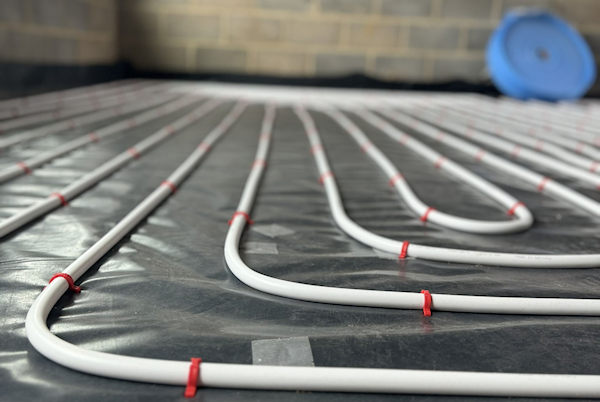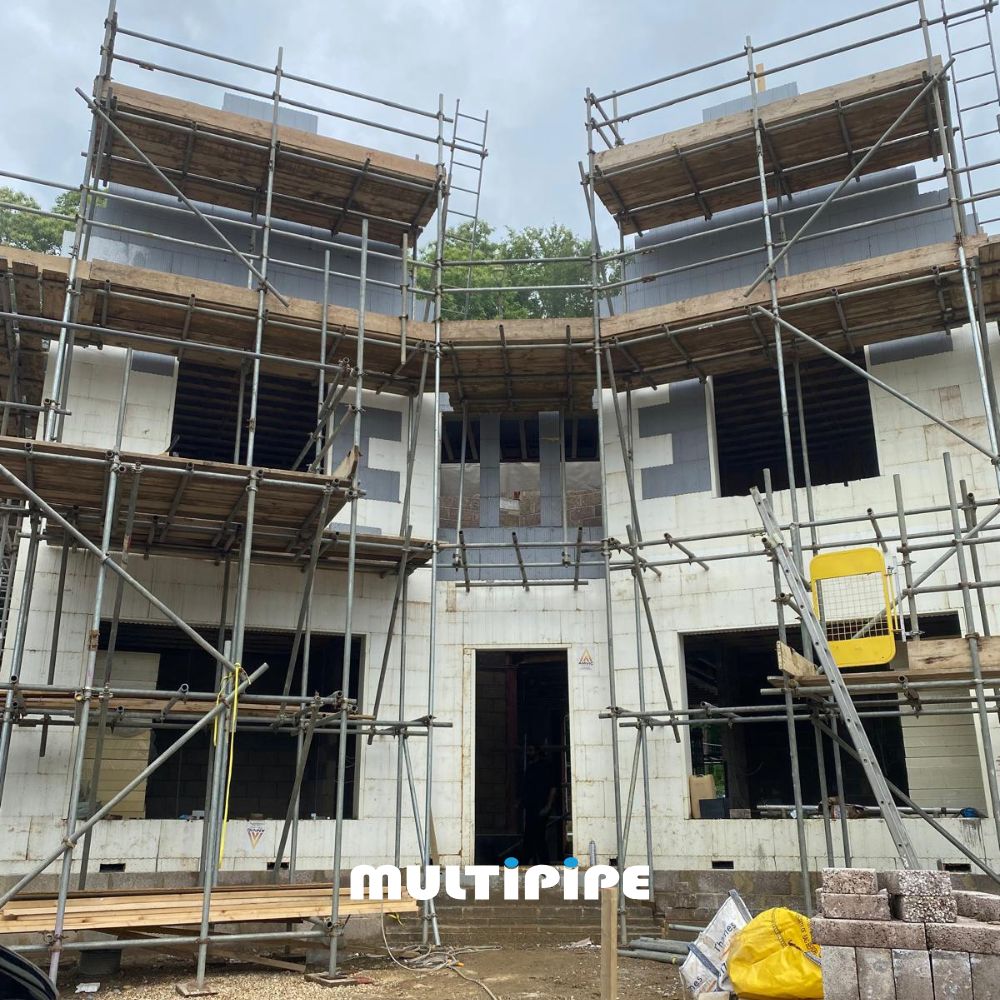
Installing UFH in concrete sub floors
Since UFH came to the UK over 30 years ago, it has grown in popularity as a great way to heat both domestic and commercial buildings. When it boils down to it, not a lot has changed, and now many companies are offering a UFH design and supply solution. But did you know that with some clever planning during a build stage, you can unlock significant potential in the build that is often overlooked?
As you may know, UK houses tend to be a solid floor on the ground, often installed on a secondary “screed” surface. But what this means is a lot of planning with the builder to change his standard construction. So first, we move the subfloor to the first layer and move the insulation above, and then we normally provide a 4:1 sand/cement mix.
But did you know there is no reason you cannot incorporate your UFH into the concrete subfloor?
Why would I do this?
Time-saving:
If you can get the UFH pipe in earlier on a project, i.e. right at the start, by the time the build is finished, there are no extended drying times before switching the system on.
Cost-saving:
Because you are not changing anything as part of the standard build, there are massive cost savings as you reduce the number of materials.
System efficiency:
When it comes to output, sand/cement sits relatively low on the transference of energy. This is because a lot of air gets trapped because of the mix, whereas standard concrete has a much higher conductivity, meaning you get a better transference of heat.
Things to watch:
Because the foundation slab tends to be thicker, reaction times are slower. However, with a great system design couple with the proper controls and correct running of the system, this installation method is far more beneficial for all new builds.
At Multipipe, we have a design team with lots of experience in unusual installations. Call us on 01245 227630 for more information and advice.











